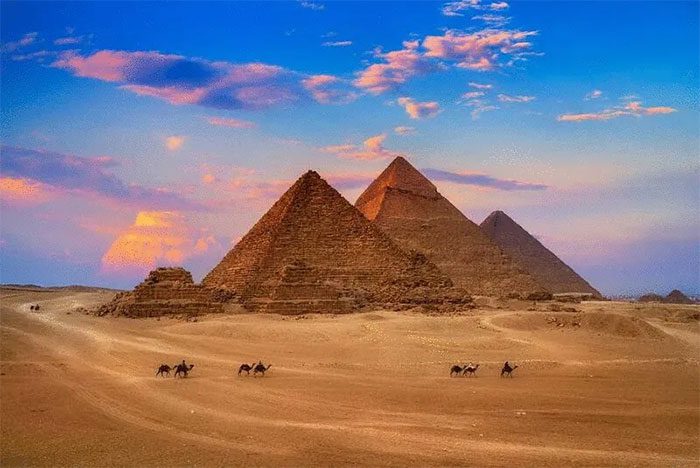From the perspective of construction volume, the Great Wall of China far surpasses the pyramids. Although each brick is much lighter, the overall mass is substantial.
The builder of the Great Wall is famously known as Qin Shi Huang. Historical records indicate that after Qin Shi Huang unified the six kingdoms, the Great Wall linked the territories of Zhao, Han, etc., and was recognized as a comprehensive defense line to the north. The Great Wall continued to be built during the Ming Dynasty, with the construction period spanning 2,000 years.

It is hard to compare the Great Wall of China with the pyramids.
Around 3100 BC, the ancient Egyptian state was initially unified. Ancient Egyptian kings, known as pharaohs, held supreme power and were viewed as incarnations of the gods. They built massive pyramids as their tombs. Pharaohs believed that “life is but a brief moment, and after death comes eternal enjoyment.”
Thus, the Egyptians regarded the afterlife as a continuation of earthly life. While alive, ancient Egyptians confidently prepared a tomb to ensure eternal life after death. Pharaohs would spend many years, even decades, constructing their own tombs, the architectural wonders of the planet. The construction of the largest pyramid, the Pyramid of Khufu, took approximately 30 years.
From a modern perspective, the construction of the Egyptian pyramids 5,000 to 6,000 years ago is indeed a formidable task. With over 110 pyramids of various sizes in Egypt, the total construction scale can be compared to that of the Great Wall of China. The Egyptian pyramids are only slightly more complex than the tombs of ancient Chinese emperors, which were built with earth and stone.
The area where the pyramids are located is generally along the Nile River. The Nile is the longest river in Africa and serves a critical transportation function. Distant stone materials could also be transported via the Nile, saving significant human and material resources. The largest pyramid was constructed shortly after Khufu ascended to the throne, taking only a few decades.
The construction of the Great Wall of China was not on flat terrain but on high mountains, serving the purpose of defending the capital. The primary function of the Great Wall was to ward off foreign invasions, largely constructed along rivers and mountains, with a watchtower every 1,000 meters, manned by soldiers. If an enemy invasion occurred, smoke signals were utilized during the day, and fire at night, effectively leveraging natural conditions to communicate in ancient times.
The Great Wall stretches over 10,000 kilometers, with most of it built on northern mountain slopes. It is estimated that if the bricks and stones of the Great Wall were stacked into a wall one meter wide, the length of the Great Wall could circle the Earth.





















































